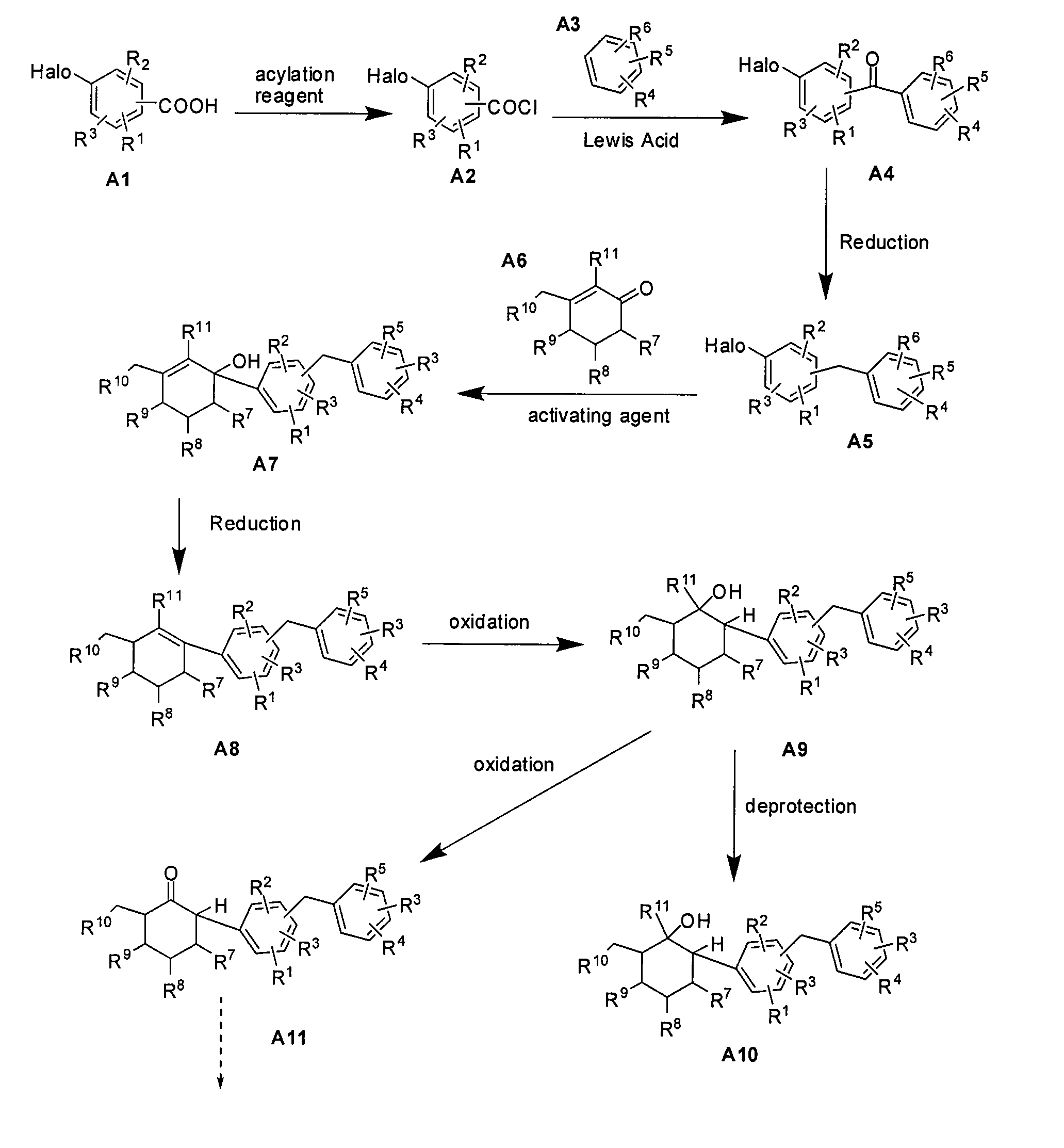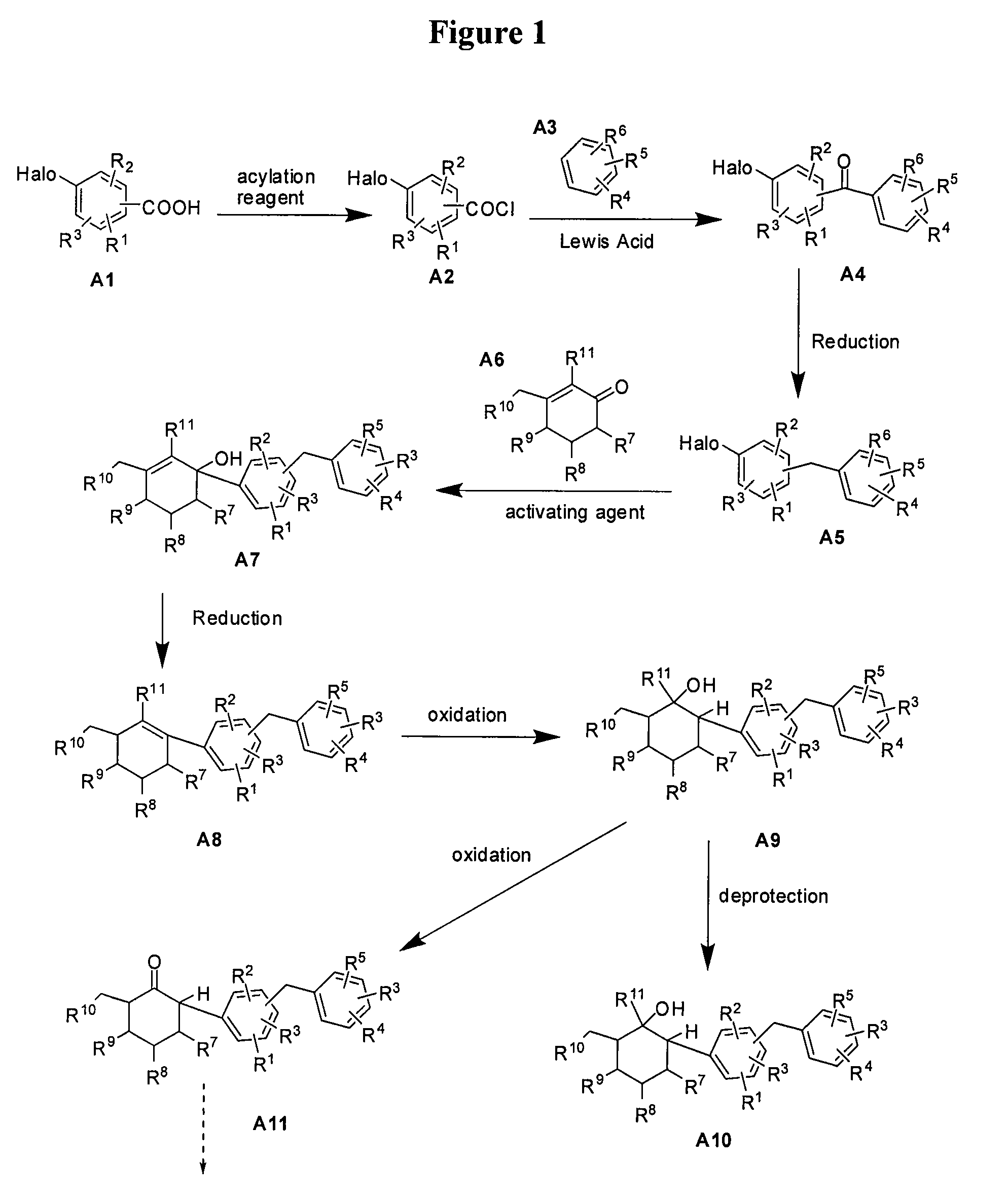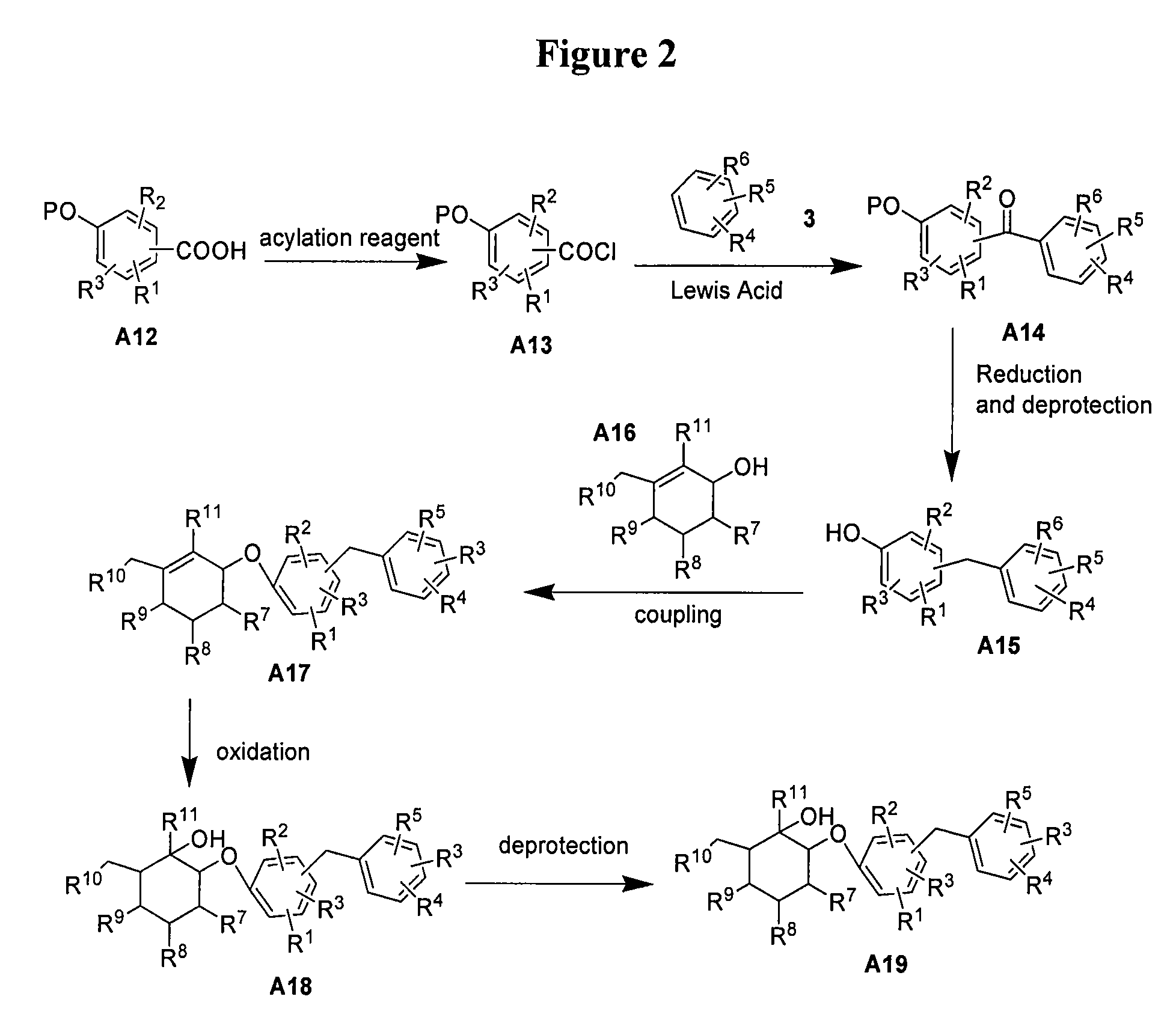Benzylphenyl cyclohexane derivatives and methods of use
- Summary
- Abstract
- Description
- Claims
- Application Information
AI Technical Summary
Benefits of technology
Problems solved by technology
Method used
Image
Examples
example 1
[0129]This example illustrates the preparation of compound 5 (R=Et) according to the approach provided in FIG. 3. Compound numbers correspond to those provided in the Figures. The general method is applicable to other compounds of the present invention.
Preparation of (1R,2R,3S,4R,5R,6S)-4-(4-chloro-3-(4-ethylbenzyl)phenyl)-6-(hydroxymethyl)cyclohexane-1,2,3,5-tetraol
[0130]
(1) The Preparation of Grignard Reagent
[0131]Under argon, Mg powder (0.216 g, 8.98 mmol, 1.2 eq) was charged into a three-necked flask, followed by addition of a portion of the solution of the 4-bromo-1-chloro-2-(4-ethylbenzyl)benzene 8 (0.769 g, 2.49 mmol) in dry THF (6 mL), and 1,2-dibromoethane (10 mol %). The mixture was heated to reflux. After the reaction was initiated (exothermic and consuming of Mg), the remaining solution of 2-(4-ethylbenzyl)-4-bromo-1-chlorobenzene 8 (1.539 g, 4.99 mmol) in dry THF (14 mL) was added dropwise. The mixture was then allowed to react for another one hour under gently refluxin...
example 2
This Example Illustrates the Preparation of (1R,2R,3S,4R,5R,6S)-4-(4-chloro-3-(4-ethoxybenzyl)phenyl)-6-(hydroxymethyl)cyclohexane-1,2,3,5-tetraol (9)
[0145]
[0146]Compound 9 was prepared by a method analogous to that described in Example 1: H1-NMR (400 MHz, CD3OD): δ 7.32 (1H, d, J=8.0), 7.11-7.16 (4H, m), 6.79 (2H, d, J=6.8 Hz), 3.96-4.02 (4H, m), 3.91 (1H, d, J=3.2 Hz), 3.63 (1H, t, J=10.4 Hz), 3.39-3.47 (2H, m), 3.32 (1H, t, J=8.8 Hz), 2.54 (1H, t, J=10.4 Hz), 1.53 (1H, tt, J=3.2, 10.4 Hz), 1.36 (3H, t, J=7.2 Hz); MS (ESI+): 423 [M+H]+, 440 [M+NH4]+, 845 [2M+H]+, 862 [2M+NH4]+, (ESI−): 467 [M+HCOO]−.
example 3
This Example Illustrates the Preparation of (1R,2R,3S,4R,5R,6S)-4-(4-chloro-3-(4-cyclopropylbenzyl)phenyl)-6-(hydroxymethyl)cyclohexane-1,2,3,5-tetraol (10)
[0147]
[0148]Compound 10 was prepared by a method analogous to that described in Example 1: 1H NMR (400 MHz, CDCl3): δ 7.33 (1H, d, J=8.0 Hz), 7.16-7.12 (2H, m), 7.09 (2H, d, J=8.0 Hz), 6.96 (2H, d, J=8.0 Hz), 4.04 (2H, s), 3.91 (2H, d, J=3.2 Hz), 3.65 (1H, t, J=10.6 Hz), 3.48 (1H, t, J=10.0 Hz), 3.42 (1H, t, J=10.0 Hz), 3.32 (1H, t, J=9.0 Hz), 2.54 (1H, t, J=10.8 Hz), 1.87-1.82 (1H, m), 1.57-1.51 (1H, m,), 0.94-0.89 (2H, m), 0.64-0.60 (2H, m); MS (ESI+): 419 [M+H]+, 436 [M+NH4]+.
PUM
| Property | Measurement | Unit |
|---|---|---|
| Composition | aaaaa | aaaaa |
| Therapeutic | aaaaa | aaaaa |
Abstract
Description
Claims
Application Information
 Login to View More
Login to View More - R&D
- Intellectual Property
- Life Sciences
- Materials
- Tech Scout
- Unparalleled Data Quality
- Higher Quality Content
- 60% Fewer Hallucinations
Browse by: Latest US Patents, China's latest patents, Technical Efficacy Thesaurus, Application Domain, Technology Topic, Popular Technical Reports.
© 2025 PatSnap. All rights reserved.Legal|Privacy policy|Modern Slavery Act Transparency Statement|Sitemap|About US| Contact US: help@patsnap.com



